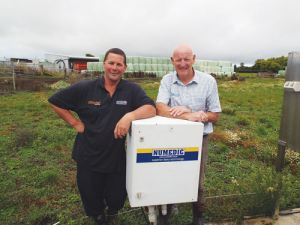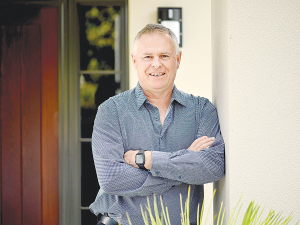The operation milks 560 Friesians on 140ha, producing 250,000kgMS/yr, and grazes 160 young stock and rising heifers at Pakatoa, Hawkes Bay.
Over the last 15 years stock numbers have doubled but little thought has been given to rising volumes of effluent. The farm has had no effluent pond, instead pumping from a sump to a travelling irrigator after each milking.
Joe McDonald comments “whenever it looked like rain we lived on our nerves and hoped we could deal with the problem, but hoped even more it wasn’t the local authority coming up our drive”.
In 2015 they decided on a new system, took expert advice, and settled on a system centred on a 5 million litre above-ground reservoir 2.7m high and 52m diameter, reputed to be the largest of its type in New Zealand.
Made from galvanised steel with a polypropylene liner, the vessel gives up to four and a half months storage, based on effluent production of 20m3/day.
Though coy about the total cost, McDonald did disclose the groundworks for the tank cost $100,000; they had to excavate to 2m depth to avert risk of subsidence under the tank.
Some 12 months on, the system has been performing faultlessly and exceeding expectations.
In practice, yard solids are scraped into a bunker for application by a rotary spreader, while liquids move through a sand trap to a 100m3 holding tank before automatic transfer to the main tank.
Spreading on about 100ha of the total area is controlled by a Pro-Logic system via a positive displacement pump and 90mm or 110mm delivery lines to the furthest point 1.1km away. The controller currently switches the system on for a set period of 140 minutes, in which time the readout indicates it delivers about 80m3.
Integral to the system is a Numedic tank mixer with twin opposed propellers and a rotating lower unit gives 360-degree coverage, removing the need for multiple mixers that would otherwise be needed in such a big tank. The propeller angles are said to deal with the thickest effluents to create a homogenous mix easily distributed over long distances. The lower rotating unit automatically moves to one of eight different positions every three minutes, agitating all areas of the perimeter to minimise sediment build-up – a big advantage over units with static propeller positioning.
Looking back on 12 months use, was the investment worth it? Yes: McDonald has peace of mind that the business now meets or exceeds current and likely future requirements. It also allows the family to take breaks from the farm and know the system can deal with unforeseen weather events. And more important are the nutritional benefits from the efficient use of what was once a “problem”.
www.numedic.co.nz















